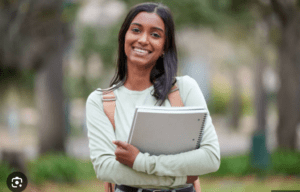One of the most important things that students can learn in school is HOW to learn. If a student develops the ability to learn how to learn, they become more curious about a wider range of topics, they develop strong problem-solving skills, and they are more open to becoming lifelong learners. By teaching students how to learn, educators open up new worlds filled with endless opportunities for their students.
Over the past decade, psychologists, cognitive scientists, and educators stressed these 5 learning strategies to help students become effective learners.
- Space out your studying over a longer period of time. Do not wait until the last minute to start studying for a test. While students who start studying at the last minute might perform acceptably on a test, they will retain less information. A few weeks after the test, the student likely won’t recall the content in a fluent or competent manner. However, if students start studying when the work is assigned rather than when the test is scheduled, they can take the time to learn smaller chunks of information in a more in-depth manner. This process of studying encourages repetition, which leads to retention of information. To effectively study over a longer period of time, students can create a study calendar, carving out bits of time to review information already learned and to review new information. So, when students are trying to learn a century’s worth of history, they can chunk learning into decades or ten significant events to better help them recall information. Students might study something and forget a bit of it, but when they go back to study the material, they will recall the information in a faster and more fluent manner. Which leads us too….
- Regularly practice retrieving information. By studying information in chunks and spacing out the process, students will practice retrieving information. To fully and effectively study, it’s important to constantly retrieve information from memory and identify gaps in what students understand. This requires students to actively study rather than simply reviewing notes and re-reading course materials. Actively studying, taking the time to recall information rather than simply re-reading information, helps students make the information part of their pool of knowledge. By retrieving information, students are constantly quizzing themselves, changing the way that information is stored in their brains. This process also helps students identify concepts that they do not understand. Which leads us too….
- Use concrete examples to understand abstract concepts. When teachers are explaining abstract concepts, students must come up with concrete examples to explain these concepts. By doing this exercise, students can readily recognize what they do not understand. This helps students nail down abstract ideas. Therefore, students can identify knowledge and take advantage of early opportunities to ask meaningful questions so that they can develop a full understanding of concepts. With every chunk of information, students should come up with their own concrete examples. The most important thing to remember is the more specific and concrete students are with their examples, the more likely they will fully understand and be able to explain concepts. Which leads us to….
- Use excessive detail to explain concepts. Don’t simply recall information. Learn to make connections. Students should ask themselves open-ended questions about concepts and answer in as much detail as possible. Then, students should go back to course materials to check for understanding. If students over-explain concepts, they can identify any gaps in knowledge and understanding. They can figure out which questions they need to ask and clarify any misconceptions or gaps in knowledge.
- Combine words and visuals. Every student has their own learning style. By using both visual and auditory strategies to learn concepts, students are giving themselves varied ways of learning and recalling information. When concepts are taught to students, they are often accompanied by a visual representation – an image, a chart, a diagram, a graphic organizer. When students are studying, they should pay careful attention to those visuals and look for other visuals to help explain concepts. This process helps the brain retrieve information through varied learning methods. Significantly, the visual involved doesn’t need to do anything other than help students recall information. So, if a student can recall the causes of the Peloponnesian War between Sparta and Athens in 403 BC by using a picture of a Greek letter as a trigger, then that is an effective visual representation.
While each strategy is designed to help students, students have varied learning styles, including visual, auditory, and experiential styles of learning. Some students have multiple learning styles, and psychologists suggest that there are anywhere between three and 170 learning styles. Understanding learning styles is essential to implementing effective learning strategies for students. It also means that these strategies can be leveraged on their own or can be combined to have the greatest impact on student learning. This means that it’s important for students to experiment with different strategies to discover what works best for them.
For more help implementing learning strategies, contact GAMECHANGERTUTORING.COM to work with a study skills tutor, test-taking skills tutor, and Executive Functioning Coach.




